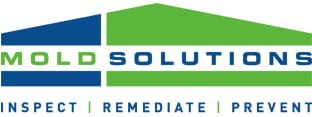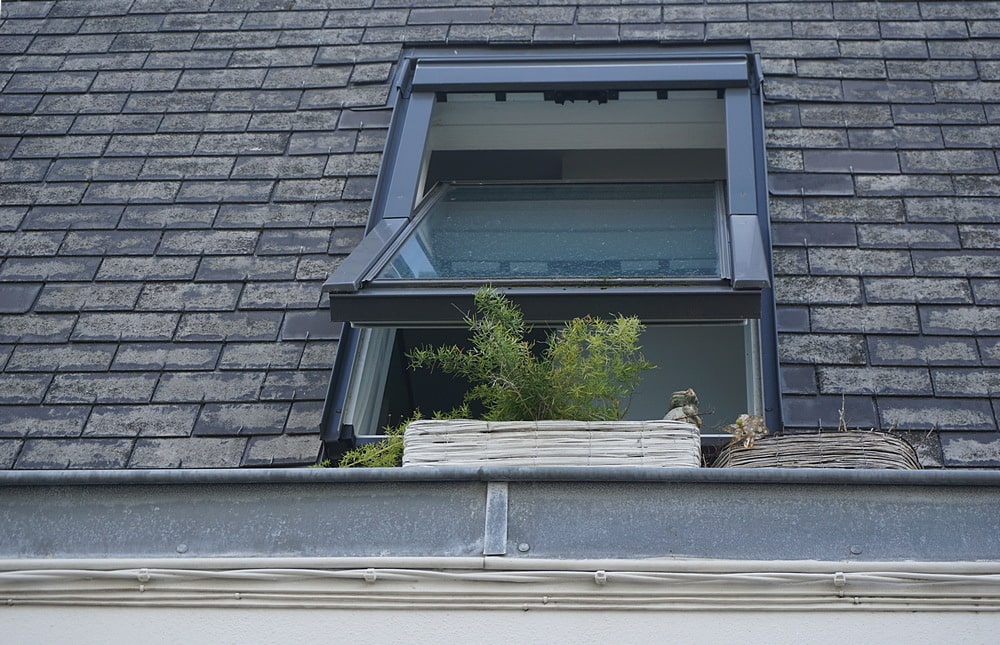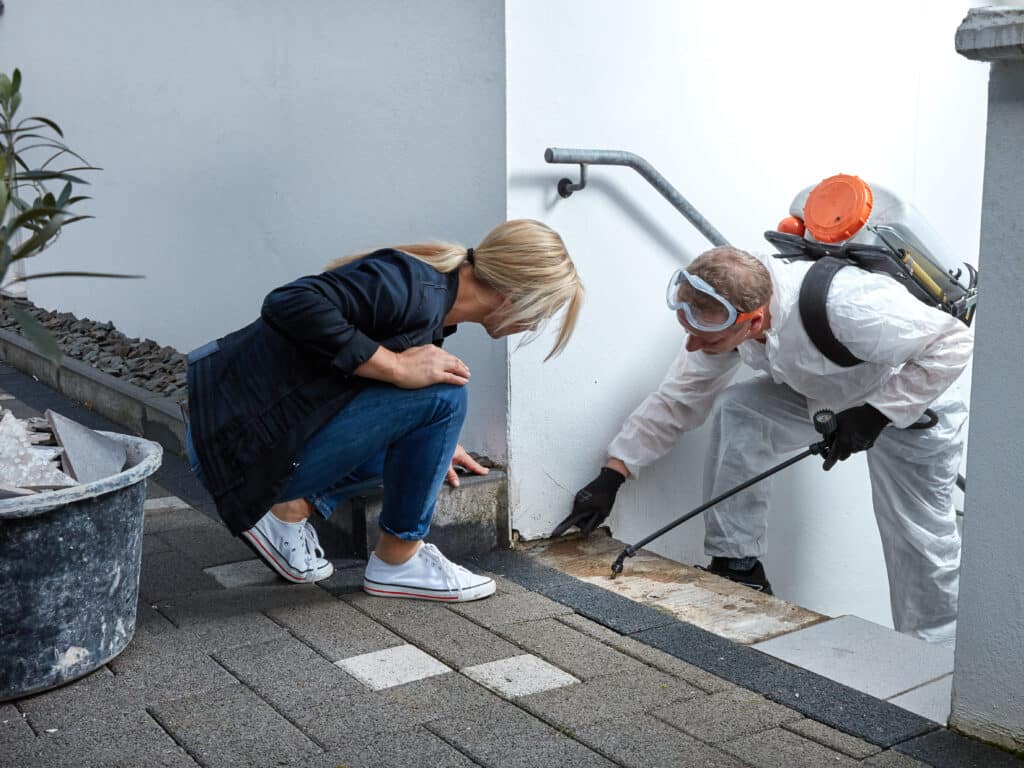Table of Contents
What are the different types of Mold Allergies?
Many types of molds exist in the US, but only a few dozen have been documented to cause an allergic reaction in people. The most common molds include:
- Alternaria
- Aspergillus
- Aureobasidium (Pullularia)
- Chaetomium
- Cladosporium (hormodendrum)
- Epicoccum
- Fusarium
- Helmin-thosporium
- Mucor
- Penicillium
- Rhizopus
- Stachybotrys Chartarum
- Serpula Lacrymans
- Trichoderma
- Ulocladium
Alternaria, Aspergillus, Cladosporium, and Penicillium are the most common molds found in homes across the US. Any of the household mold varieties can cause the development of an allergy to mold in high enough concentrations and with long enough exposure to mold and its spores.
Are there any Other Factors that make me more susceptible to mold allergies?
Many factors can make someone more susceptible to develop a mold allergy, including:
- Family History. If your mother and father will have the most impact on judging susceptibility of allergens.
- Occupational exposure. Jobs that put you in high-risk mold situations include construction, roofing, farming, dairy work, logging, baking, millwork, carpentry, greenhouse work, winemaking, furniture repair or any job that might require you to be in a damp environment continuously.
- Sleeping/living in a house that is high in humidity. When indoor conditions get above 50 percent humidity, the chance of mold growth increases dramatically. Mold can collect in vent systems that are not controlled and cleaned regularly, which will put you at risk due to prolonged exposure. Windows and doors that have too much weatherproofing can cause seals that trap moisture inside the house.
- Working or living in an apartment building that has a history of mold incursions. Mold does not die like mildew does with a hard freeze. It goes dormant, which allows for it to continue to spread across most places.
- Because of this, mold incursions that become deeply rooted in large buildings are hard to fully cleanout, which causes them to come back again and again. If you see anything report it so that the problem can be remedied as soon as possible.
Mold will grow almost anywhere if the conditions are correct. All mold needs to grow in is a moist environment, that are usually dark, untouched places in your home which include: in walls/framing, on the grout in your bathroom, in carpet, and even in air conditioning ducts with little airflow.
What are the Symptoms of Mold Allergies?
According to the Asthma and Allergy Foundation of America, July to Early Fall are the most common months to see symptoms caused by mold mycotoxins or mold spores. But mold can grow in many undisturbed, damp places indoors, so symptoms can pop up any time of year with the right conditions. Symptoms of mold allergies appear much like most other common upper respiratory infections, which include:
- Coughing
- Sneezing
- Drainage
- Stuffy or Runny Nose
- Itchy, Watery eyes
- Itchy Nose or Throat
- Dry and/or Scaly Skin
These symptoms will vary in severity from person to person. You may be affected year-round, in specific environments, or even just a specific time of year. If you are affected by allergy symptoms year-round, it is just as important to test your home for mold spores as it is to go see a doctor for an allergens test.
What are the Treatments for Mold Allergies?
Other than considering only your symptoms, doctors can conduct a physical test to be able to rule out other allergens that are common to your local area. If you are consistently affected by allergens year-round consider asking a doctor to give you a skin prick test or a blood test for allergens. If you have ideas of what specific allergens affect you, tell the doctor and he might be able to tailor the test to you better.
Here are some ways to reduce chances of mold allergies:
- Cleaning and repairing water damaged sources of the mold spores is the best way to treat your allergies
- Preventing mold growth inside of your home is also another way of stopping the allergens from causing an allergic reaction
- One way to prevent mold growth is to use a dehumidifier. Hot weather and high humidity can cause mold to grow at any time, and a good dehumidifier can help combat this
- If you spot mold growth on a hard surface (glass, plastic or tile), clean it using a detergent or bleach solution. After that, look for the source so you can prevent it from happening again. It’s also a good idea to get professional help / advice in case you don’t know where the mold is coming from.
But even while you are doing these actions you will still probably have symptoms from the mold allergies
Are there any Other Problems Caused by Mold Exposure?
The majority of allergic responses caused by mold appear much like most pollen allergies. But some people, usually immunocompromised individuals, will have an extremely severe response. These include:
- Mold-induced Asthmatic Response. Mold spores can induce asthma much like Scotch-Broom found in the NW, but some people with histories can react with a severe asthma attack.
- Rhinitis Caused by Mold Spores. Inflammation of the nose caused by spores or mycotoxins released from mold.
- Sinusitis Caused by Mold Spores. Inflammation or infection of the sinuses caused by a high concentration of mold spores in an environment’s air supply.
- Hypersensitivity pneumonitis. This is a rare reaction caused, much like sinusitis that is caused by a high concentration of mold spores in the air.
- Bronchopulmonary Aspergillosis. This can occur in people that have Cystic Fibrosis or Asthma. Specific to the Aspergillus mold.
- Dermatitis. In extremely rare cases, when mold concentrations are abnormally high for prolonged periods of time, dermatitis (skin rash) can form on open areas or even areas that are in contact with contaminated clothing. Immediate removal from the home and doctor intervention is the best course of action.
Will mold allergies make my asthma worse?
If you have asthma, mold spores can induce asthma symptoms like many other allergens. People that have weakened immune systems are at risk of a severe asthma attack. Symptoms of asthma include:
- Chest tightness
- Coughing
- Shortness of breath
- Wheezing
Medicines that help with mold allergies
Antihistamines. These over-the-counter (OTC) medicines help with itching skin and itching, runny, and sneezing noses. They block histamines, an inflammatory compound released by the body during an allergic reaction. They include loratadine (Claritin), fexofenadine (Allegra Allergy) and cetirizine (Xyzal Allergy, Zyrtec Allergy). Nasal Sprays are available with a physician’s prescription.
Oral Decongestants. There are many OTC oral decongestants including Sudafed, Mucinex, and many others. These can cause hypertension (high blood pressure) in certain people. You should consult a physician to be sure they won’t cause hypertension in you.
Nasal Corticosteroids. These nasal sprays help treat and prevent inflammation located in the upper respiratory system. For many casual but severe sufferers of allergies, these nasal sprays are the most effective treatment of symptoms caused by allergies. These include mometasone (Nasonex), budesonide (Rhinocort), fluticasone (Xhance). They are generally safe for long-term use.
Decongestant Nasal Sprays. These include oxymetazoline (Afrin) and others. Do not take for more than 3 or 4 days continuously because it can cause the symptoms to come back worse than before when you stop using the spray.
Mast Cell Stabilizers. These prevent your body from producing histamines. They are available in eye drops and nose sprays.
Topical Corticosteroid ointments. Prescription-strength may be needed for severe rashes but for most cases of an allergic reaction on the skin, antihistamines and a topical corticosteroid will clear it up.
Montelukast. Montelukast (Singulair) is a medicine taken in order to block the action of leukotrienes. Leukotrienes are immuno-response chemicals responsible for excessn mucus. It has also been used to treat allergic asthma, but when choosing medications to help with asthma always consult your physician.
Immunotherapy. The two types of immunotherapy used are Allergy shots and sublingual immunotherapy (SLIT).
Allergy shots involve getting allergens injected into you multiple times with increasing dosage to allow your body to build the antibodies needed to fight the allergens. Allergy shots are not for everyone and do not usually do anything for people with allergies to food or medicines.
SLIT, or sublingual immunotherapy, is a way to treat people without injections. The tablet is put under the tongue, but is only available for a few allergens, such as grass, ragweed pollen, and dust mites.
While both immunotherapies are relatively safe to use, they should both be done by a professional allergist or physician’s office.
Epinephrine (EpiPen). Found in premeasured devices that are easy enough to operate by yourself. Needed within a few minutes of the first symptoms of a severe allergic reaction (anaphylaxis).
Natural Remedies for Mold Allergies
Nasal Rinses (Nasal Lavage). Uses a specific container, such as a bulb syringe or a neti pot, to irrigate your nose or sinuses with saltwater. Use distilled and sterilized water for the solution and use the same water to rinse or wash out the container after every use. This natural remedy will help keep your nasal passages clean of mold spores and other allergens.
Dust mask. Use a dust mask when you know you will be around and possibly agitating dormant mold. Examples include, but are not limited to, yard work in which you are going to be dealing with damp leaves or if you will be moving items that have set for long periods of time. This is more of prevention than a remedy, but if you are already showing signs a dust mask might help with symptoms if you have to stay in an area with mold spores.
Sleep with windows closed. Try it out! Outdoor spores can easily circumvent your AC filter this way and allow the spores directly into your home. Keep your windows closed especially if you are already showing symptoms. Late Summer through Fall is when the majority of outdoor mold allergens proliferate.
Avoid being outdoors for prolonged periods during certain times of the year. If you have a history of mold allergies, or you are immunocompromised or you know your immune system has been weakened, you should avoid being outdoors as much as you can so that your body does not have a worse allergic reaction. If you are showing symptoms during late Summer through Fall, you should also avoid the outdoors in order to give your body an easier time fighting the allergens.
Supplements
Multivitamin – Specialized towards boosting your immune system is recommended. But if you use a specialized multivitamin take the dosages into account when adding the
other supplements to a multivitamin.
Vitamin A – Recommended to take 25,000 IUs daily. Space it out in multiple doses if Possible.
Vitamin C – Recommended taking 2000-3000 mg multiple times a day until you establish a bowel tolerance and reduce dosage accordingly. (Bowel tolerance is the total daily amount of vitamin C that can be taken without causing diarrhea. This amount varies from person to person and can change depending on stress or other complications.)
Vitamin E – Recommended to take 400 IUs daily.
Zinc – Recommended to take 30 mg daily.
Bioflavonoids (Catechin, Quercetin, and Hesperidin) – Bioflavonoids are natural antihistamines and strongly anti-allergenic. Recommended to take 2-3 grams daily with meals. When symptoms are severe, take no more than 6 grams. When used in conjunction with Bromelain and vitamin C, the treatment is enhanced. Products that combine these compounds are for purchase
Flaxseed oil – Recommended to take 1 tbsp daily.
Probiotics (Bifidus or lactobacillus acidophilus) – Probiotics are bowel microflora organisms (microscopic bacteria that normally inhabit the intestines). Take one in the morning and one in the evening with meals.
Best Places to Live with Mold Allergies
Since there are so many types of mold and other allergens, it is virtually impossible to name one place as a safe haven for all types of allergy victims. Still, there are things to consider. There are perimeters when selecting a place to move to for people suffering from mold allergies, but unfortunately, there is no true, universal answer. Allergy sufferers should always check the mold and pollen count of each season for at least a year, if possible, in any area before moving. They may be making their life mush worse by coming into contact with a previously undiagnosed allergen for You.
Large Cities And Mold Allergens – Better Or Worse?
Large cities, such as McAllen, TX, Louisville, KY, Jackson, MS, Memphis, TN, and Syracuse, NY seem to make existing allergy sufferers worse. All were consistently in the top cities for allergens in the US in both Fall 2018 and Spring 2019, according to a study released by AAFA (Asthma and Allergy Foundation of America). Since there are so many more allergens in a city, which could be because of the population density, it is impossible to be prepared for everything even when researching these places before you move. Air pollution may also play a part in making your symptoms worse.
What is Your Mold Allergy Terrain?
Warm, windy conditions are bad for mold allergy sufferers. Mold thrives on warmth and travels by way of the breeze. Even though the salt air will keep some mold away, some
are resistant to the salt air and can still thrive not far inland. So even though it would be pretty to move to the beach, it may not give you a reprieve from your mold allergies.
Even in the northern US, where freezes occur often, mold can grow from the snow and ice melt off that can pool or create water damage in wood. Places where it stays below
the freezing temperature for months at a time are some of the few places where mold will at least not grow outside for a large chunk of the year.
It is good to be prepared when you know you must move, but you should not move to “get away from your allergies”.
Mold Today – Mold Allergies in 2020
Mold allergen levels vary, and while a few generalities will work in your favor, you should always check multiple sources for updated mold and pollen counts.
Each year the Asthma and Allergy Foundation of America classifies the worst cities for pollen sufferers. They base the list off of criteria, including high pollen counts, high allergy medicine usage and lower access to specialized care.
Call Mold Solutions To Solve Your Indoor Mold Problems Today
If you know that mold is a problem in your residential or commercial space, feel free to contact Mold Solutions













